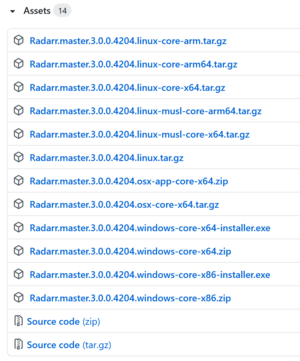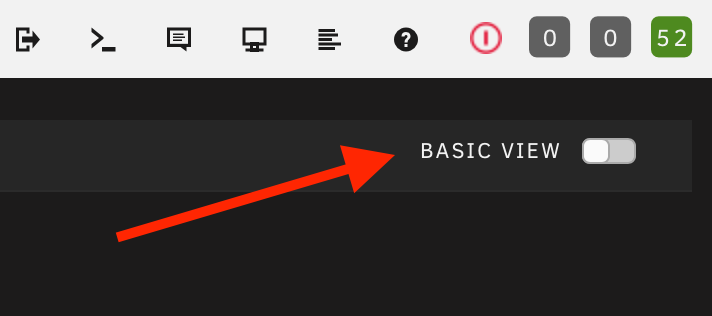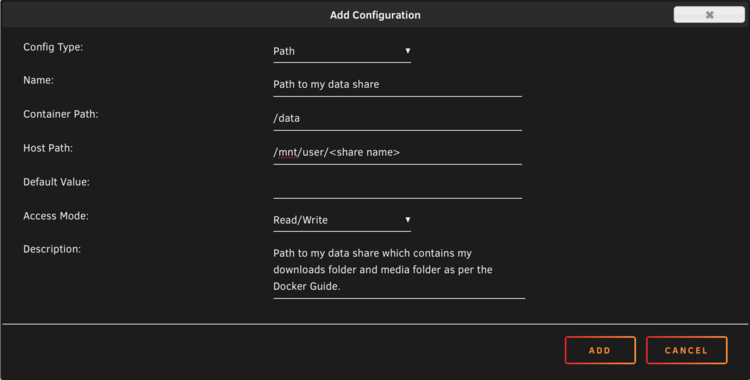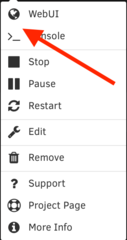Lidarr Installation
Installing
Windows
Please see the the Lidarr website for the Windows installer.
OSX
Detailed instructions coming "soon" For now please see our website for details: https://lidarr.audio/#downloads-v1-macos
Linux
Debian/Ubuntu
.NET Core Install
You'll need curl, mediainfo, chromaprint, and sqlite.
sudo apt install curl mediainfo sqlite3 libchromaprint-tools
Manual Install
Note: this assumes you created a user named lidarr
In the example screenshot here, you can see multiple options. Choose the option that matches your OS and processor best. For most users, this would be .linux-core-x64.tar.gz selected via arch=x64 in the url.
For:
- ARM use
arch=arm - ARM64 use
arch=arm64 - AMD64 use
arch=x64
Download this file onto your system: (Note: The link below will target the Linux .NET Core x64 file. Replace if needed with the file you chose previously)
wget --content-disposition 'http://lidarr.servarr.com/v1/update/develop/updatefile?os=linux&runtime=netcore&arch=x64'
- Alternatively: Go to the Lidarr download page, and pick the appropriate file: https://github.com/Lidarr/Lidarr/releases
Uncompress:
tar -xvzf Lidarr*.linux*.tar.gz
Move to your preferred install location (typically /opt/Lidarr/
sudo mv Lidarr/ /opt
Finally, make sure you grant the needed permission to your install directory:
sudo chown lidarr:lidarr /opt/Lidarr
You can start Lidarr with the following command:
/opt/Lidarr/Lidarr -nobrowser -data=path/to/app/data
Auto Start Using Systemd
Most modern Linux distributions have switched to systemd, which involves a simple unit service file which gets enabled and started. It is important to remember that in Linux, capitalization matters. User account names and Group names are typically all lowercase, as are the directory structures mapped to them as part of the home directory.
Preparing the Unit Service File
Several items may need to be changed to match your installation:
Usershould match the service account that lidarr will run as.Groupshould match the service account group that lidarr will run as.ExecStarthas several items that should match your installation/opt/Lidarr/Lidarr- Executable Path Default location is
/opt/Lidarr/Lidarr, but you may need to update if you installed Lidarr elsewhere. - Data Directory Default location is
-data=/home/$USER/.config/Lidarr/, but you may need to update if you want to keep your database and settings elsewhere.
- Executable Path Default location is
The unit service file should be named Lidarr.service and the best place for it is /etc/systemd/system/. Alternative locations like /usr/lib/systemd/system/ and /lib/systemd/system/ may depend on the distribution used.
This example unit assumes that the User and Group are both lidarr, Lidarr's executable is placed in /opt/Lidarr/. Please update the data path to where you want the database, logs, and other metadata stored.
[Unit] Description=Lidarr Daemon After=syslog.target network.target [Service] # Change the user and group variables here. User=lidarr Group=lidarr Type=simple # NetCore install: # Update the data path ExecStart=/opt/Lidarr/Lidarr -nobrowser -data=/path/to/appdata/for/Lidarr/ TimeoutStopSec=20 KillMode=process Restart=always [Install] WantedBy=multi-user.target
Verify Directory Permissions
Ensure the User that will be running Lidarr has access to both the executable directory and data directory.
Running the command ls -lad /directory/ will show the permissions for that folder.
Example:
$ ls -lad /opt/Lidarr drwxr-xr-x 6 lidarr lidarr 24576 Nov 28 21:30 /opt/Lidarr/ $ ls -lad /home/$User/.config/Lidarr/ drwxr-xr-x 6 lidarr lidarr 24576 Nov 28 21:30 /home/$User/.config/Lidarr/
Enabling and starting the Unit Service File
Once you have created Lidarr.service, you will want to enable the service:
sudo systemctl enable Lidarr.service
You are now ready to start Lidarr. You can do so with the start command:
sudo systemctl start Lidarr.service
If you want to verify Lidarr is running, you can run the status command:
$ sudo systemctl status Lidarr.service
● Lidarr.service - LidarrService
Loaded: loaded (/usr/lib/systemd/system/Lidarr.service; enabled; vendor preset: disabled)
Active: active (running) since Tue 2017-03-07 10:23:44 PST; 5min ago
Main PID: 19978 (Lidarr)
Tasks: 16 (limit: 4915)
Memory: 114.6M
CPU: 9.331s
CGroup: /system.slice/Lidarr.service
└─19978 /opt/Lidarr/Lidarr -nobrowser -data=/path/to/data/.config/Lidarr/
Mar 07 10:23:44 apollo systemd[1]: Started Lidarr Service.
NGINX Reverse Proxy
A reverse proxy allows you to set up Lidarr so you can access it from the web without using the port number. Rather than mydomain.com:8686 you would use mydomain.com/Lidarr instead.
It is assumed you have NGINX installed.
Create a text file named Lidarr.conf and place it in your default NGINX App directory, typically /etc/nginx/conf.d/apps
- Lidarr Reverse Proxy
- Be sure to set your Base-URL in Lidarr
location /lidarr {
proxy_pass http://127.0.0.1:8686/lidarr;
proxy_set_header X-Real-IP $remote_addr;
proxy_set_header X-Forwarded-For $proxy_add_x_forwarded_for;
proxy_set_header X-Forwarded-Proto $scheme;
proxy_http_version 1.1;
proxy_no_cache $cookie_session;
proxy_set_header Upgrade $http_upgrade;
proxy_set_header Connection $http_connection;
# Allow the Lidarr API
location /lidarr/api { auth_request off;
proxy_pass http://127.0.0.1:8686/lidarr/api;
}
}
Please note: It is important to ensure that the line proxy_set_header Connection $http_connection; is accurate. The NGINX documentation recommends setting this to Upgrade rather than $http_connection; but this will NOT work.
Once you have saved the file, test your NGINX config:
sudo nginx -t
Which should show this:
nginx: the configuration file /etc/nginx/nginx.conf syntax is ok nginx: configuration file /etc/nginx/nginx.conf test is successful
Now you can have NGINX reload it's configuration to use the new file:
sudo nginx -s reload
Finally, make sure you add your URL Base to Lidarr. This should match what you have next to the word Location in the Lidarr.conf file, with the leading slash, likely this: /lidarr
The URL base can be set here: https://wiki.servarr.com/Lidarr_Settings#Host
Docker
Please refer to TRaSH's Guide.
Docker on unRAID
- Installation of Lidarr is quite simple when it comes to unRAID as they have made installing Docker containers a breeze.
Simply head on over to the community applications store on the top bar of your browser.
In the search field type in Lidarr
Select which docker image you would like to install. There are several to choose from
Depending on which container you go with will determine the steps in which you take. Some containers come preloaded with volumes mapped already. This is really up to your liking how you would like your container volumes to be laid out. It is highly recommended to follow the guide listed here for your volume mapping
Once you have selected which container you are going to go with, you will need to either create the volumes for Lidarr to be able to use or simply use the pre-filled ones. (Highly recommended to remove the pre-filled and use your own, to remove the pre-filled ones).
To create new volumes simply select the
Add another Path, Port, Variable, Label or Devicetext at the bottom above the Apply button.
Once the new window appears you will want to use the drop down box next to Config Type: and make sure that it is set to Path.
From here you will want to fill out all pertinent information:
Name: The name of this path, this can be any unique name more like a note to know what this path is for.
Container Path: This will be the path that Lidarr will see inside the container
/datais a favorite
Host Path: This is the path to the host (unRAID) machine, This will be
/mnt/user/<Your User Share>
The last three items Default Value:, Access Mode", and Description: Can be left alone.
Click ADD
Last thing to check is to make sure Host Port for 8686 is filled in with
8686, UNLESS This port causes any conflicts with any other container. If it does please choose a different port that is not in use.
Click APPLY
Now the Lidarr's container is being downloaded, once complete simply click the OK button at the bottom of the new pop up window
Click DOCKER on the top row of your browser.
Now all you will need to do is simply left click on your newly created container and select WebUI.
Now a new browser tab should show up with Lidarr running in all its glory.
Depending on which container you select you may recieve a pop up asking you to Choose A Branch To Install when in doubt go with the Default :latest branch
To remove the pre-filled paths simply select the toggle in the upper right from Basic to Advanced view then scroll down to the pre-filled path and click Remove
NOTE If you follow the Docker Guide you will only need one Volume path to be made as all information that Lidarr will need will be in one share /mnt/user/data





